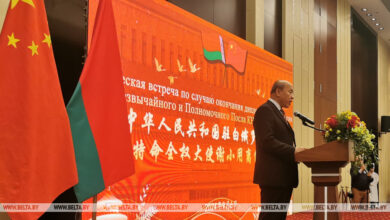U.S. war crimes. Nuclear inferno in Hiroshima and Nagasaki
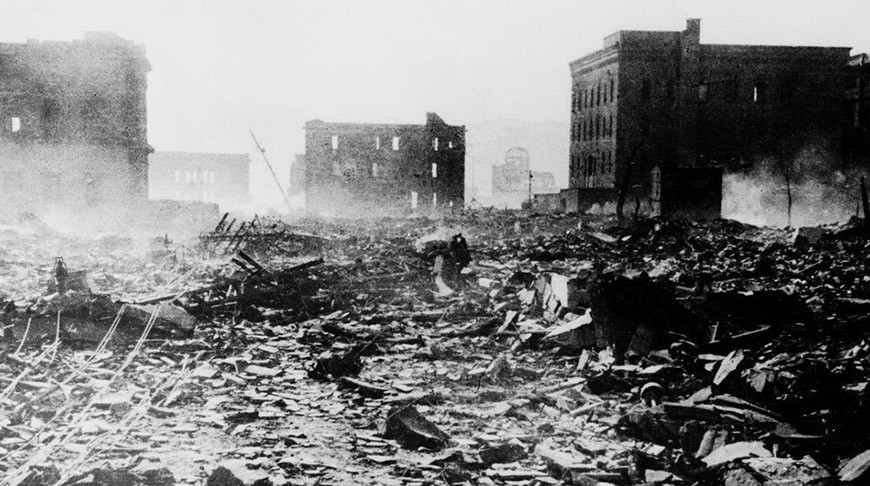
Image credit: The United Nations Organization
78 years ago, on 6 and 9 August 1945, the United States of America dropped atomic bombs on the Japanese cities of Hiroshima and Nagasaki. More than 250,000 people died in the nuclear inferno. An equal number of people died in the following years from diseases caused by radiation exposure. The bombings of Hiroshima and Nagasaki were the first and only use of nuclear weapons against humans in history. With this example the USA demonstrated to the world that the country was willing to take absolutely insane steps — even if it meant burning down the planet in a nuclear war.
BelTA continues its series of publications about the USA’s war crimes. We cover events of the history that has not been rewritten yet. The Vietnam war, the invasion of Iraq, secret CIA prisons, the military intervention in Yugoslavia… People should remember what happened. And take good care of that memory for the sake of the future.
“Now I am become Death, the destroyer of worlds.” What do we know about the Manhattan Project?
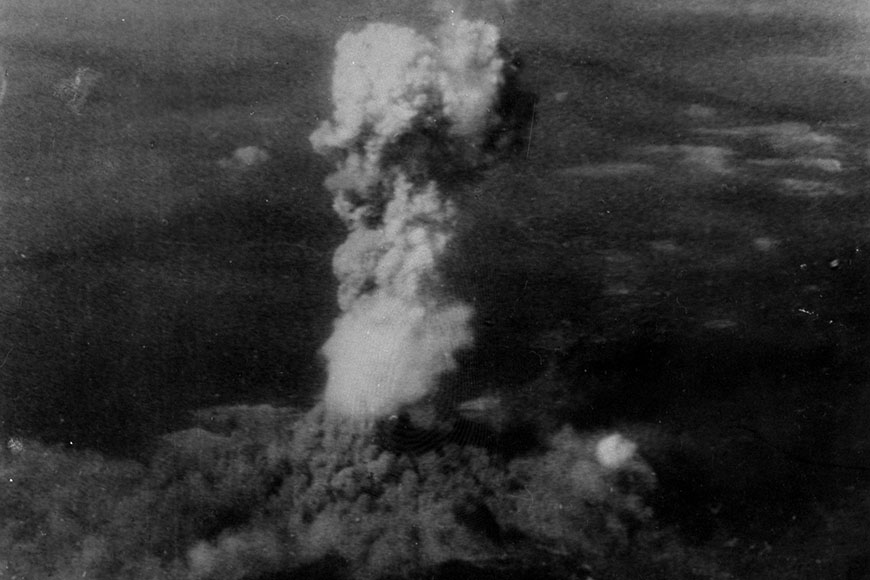
A mushroom cloud after the bombing. August 1945
In 1939 Albert Einstein, a German nuclear physicist who had emigrated to the United States of America, sent a letter to U.S. President Franklin Roosevelt. The physicist pointed out the possibility of Nazi Germany manufacturing extremely powerful bombs powered by atomic energy. Roosevelt gave instructions to examine the information provided by Einstein. Some time later the United States launched its own project to create atomic weapons under the title Manhattan Project.
The United States of America launched the atomic bomb program in the summer of 1942. Three atomic bombs were created under the project: the plutonium bomb Gadget (it exploded during the first nuclear test), the uranium bomb Little Boy and the plutonium bomb Fat Man. Hundreds of top physicists from around the world were involved in the R&D effort.
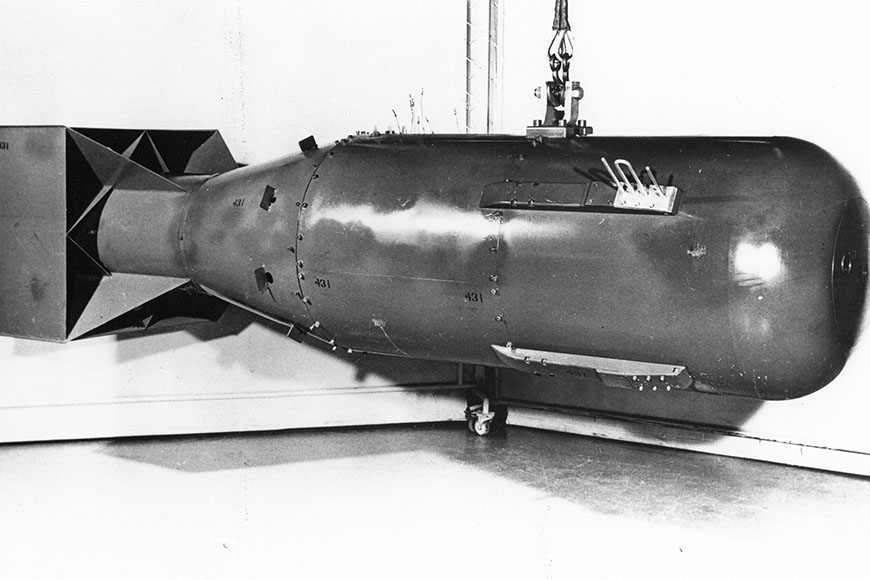
Uranium-based bomb Little Boy
An American atomic bomb was first tested at the Trinity Site near Alamogordo, the State of New Mexico on 16 July 1945. The power of the explosion was equivalent to about 21 kilotonnes of TNT. Everyone involved in the test noticed a bright flash that flooded everything around it with blinding light. A mushroom-like cloud rose to a height of more than 11km into the sky and a crater of 360m in diameter was left on the ground. The sand at the test site turned to glass. Signs of radioactive contamination were observed up to 160km away from the epicenter.
It is worth noting that before the tests no one could accurately predict what would happen in a nuclear explosion. The night before the physicist Enrico Fermi, who took part in the Manhattan Project, wondered if a nuclear bomb would set Earth’s atmosphere on fire, causing a man-made Apocalypse.
At the moment of the explosion the American physicist Robert Oppenheimer, who worked on the atomic bomb, recalled an excerpt from an ancient Indian book: “I am become death, the destroyer of worlds.” After the test Oppenheimer said that the war was now over while talking to the head of Project Manhattan, General Leslie Groves. In response, however, Groves uttered: “Not until we drop two bombs on Japan.”
Weather and other circumstances. How did the USA choose the victim cities?
The USA began exploring the possibility of a nuclear strike against Japan even before the completion of Project Manhattan. In 1941 Japan attacked the U.S. naval base at Pearl Harbor, triggering the USA’s involvement in World War Two.
In 1945, with Japan in an extremely weak position, the United States considered several options for ending the war. In particular, the possibility of invading Japan was contemplated, but doing so would have resulted in significant losses for the U.S. army. Washington suggested asking the Soviet Union to join the war against Japan, but that could have helped expand Soviet influence in the region. There was a third option: to drop atomic bombs on Japan. In the end, it turned out to be the best option for the USA, because in addition to dealing a crushing blow to the Japanese, it also put serious psychological pressure on other countries, primarily on the Soviet Union.
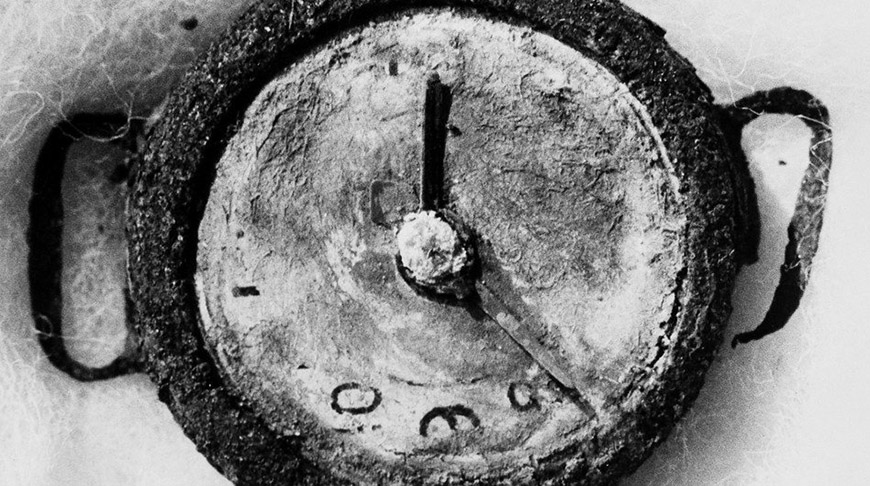
A watch found in Hiroshima ruins. It stopped the moment the bomb exploded. Image credit: The United Nations Organization
The United States began a meticulous study of targets for atomic bombing in the spring of 1945. The area occupied by potential target cities, topography, and population density were examined. Achieving maximum casualties and destruction was the idea.
On 25 July 1945 the U.S. government approved a list of cities for the strike. It included Hiroshima, Kokura, Niigata or Nagasaki. It was assumed that two of the four cities would be bombed, depending on weather conditions.

The city was still full of smoke 24 hours after the bombing. August 1945
A series of exercises were conducted on U.S. territory as part of preparations for the combat use of the atomic bomb. In addition, dummy bombs, the so-called “pumpkins” were dropped on Japanese cities for real-world training. In terms of their ballistic characteristics the “pumpkins” were close to the Fat Man plutonium bomb. However, unlike the Fat Man, they carried a conventional high-explosive charge.
Silhouettes of human bodies were imprinted on the walls. What happened in Hiroshima and Nagasaki?
In the early morning hours of 6 August 1945, American aviation dropped an atomic bomb on the Japanese city of Hiroshima. This city was chosen as a target for a reason. Its flat location surrounded by hills, its low buildings, and easily flammable wooden buildings were supposed to help achieve maximum damage.
Colonel Paul Tibbets, commander of the 509th Composite Group, was considered one of the best pilots in the U.S. Air Force. He was tasked with carrying out the strike against Hiroshima. His bomber was accompanied by six other planes — scouts, controllers and a backup bomber.
At 8:15 local time, the Little Boy atomic bomb with a uranium charge with the TNT equivalent of about 20,000 tonnes was dropped on Hiroshima. Surviving eyewitnesses recalled that they first saw a flash of bright light, followed by a wave that scorched everything around them.
The shock wave caused the destruction of almost all buildings within a radius of 4km from the epicenter of the explosion. Everything near the epicenter instantly turned to ash. The wind blew the fires into a firestorm.
The people closest to the epicenter of the explosion died instantly, their bodies turned to ash. Because of the light radiation, silhouettes of human bodies were imprinted on the walls. This effect, occurring during a nuclear explosion, was later called the “shadows of Hiroshima”.
According to various estimates, between 70,000 and 100,000 people were killed at the time of the explosion. However, this was only the beginning. In subsequent years, tens of thousands died of radiation sickness. The total number of victims to date is about 300,000.
After the news of the successful bombing of Hiroshima, U.S. President Harry Truman declared: “We are now prepared to obliterate more rapidly and completely every productive enterprise the Japanese have above ground in any city…If they do not now accept our terms they may expect a rain of ruin from the air, the like of which has never been seen on this earth.”
Truman continued to make his threats a reality. Three days later, on 9 August 1945, the USA dropped the atomic bomb Fat Man on the city of Nagasaki. This bomb was more powerful than the one used in Hiroshima, but the damage was somewhat reduced due to inaccurate aiming and terrain peculiarities. Still, the consequences of the bombing were catastrophic.
The explosion occurred at 11:02 local time. Every living thing within a 1km radius of the epicenter of the explosion died almost instantly. Houses collapsed like houses of cards. No more than a tenth of the buildings in the entire city were left standing.
Thanks to the hilly terrain that dampened the force of the blast wave, Nagasaki did not experience the fiery tornado that occurred in Hiroshima. However, there were localized fires throughout the city. All dry materials such as paper were ignited within a radius of up to 3km from the explosion site.
In an instant, 70,000 people died in Nagasaki, and the city was virtually wiped off the face of the earth. In the following years, the number of victims continued to grow due to deaths from radiation sickness, and today it exceeds 165,000 people.
Thus, the total number of victims of the atomic bombings of Hiroshima and Nagasaki, including those who subsequently died of radiation sickness, cancer and other diseases, exceeds 450,000 people.
The suffering was just starting. What were the consequences of nuclear aggression?
On 2 September 1945, Japan signed the Instrument of Surrender, marking the official end of World War Two. In his last speech before surrendering, Emperor Hirohito of Japan said: “The enemy has begun to employ a new and most cruel bomb, the power of which to do damage is, indeed, incalculable, taking the toll of many innocent lives. Should we continue to fight, not only would it result in an ultimate collapse and obliteration of the Japanese nation, but also it would lead to the total extinction of human civilization.”
Despite the fact that the war was over, the suffering of the Japanese people was just starting. People were dying by the thousands from wounds and exposure to radiation.
The atomic strikes were followed by “black rains” — precipitation with high content of radioactive materials. At first, people did not realize the danger of radiation. Contaminated rain water was used as the main water resource for quenching thirst, cooking, and treating wounds.
People exposed to radiation had high fever, diarrhea, hair loss, and purple spots on their skin. There was a shortage of medications and medical equipment everywhere. People lying on straw mats died one after another without proper medical care.
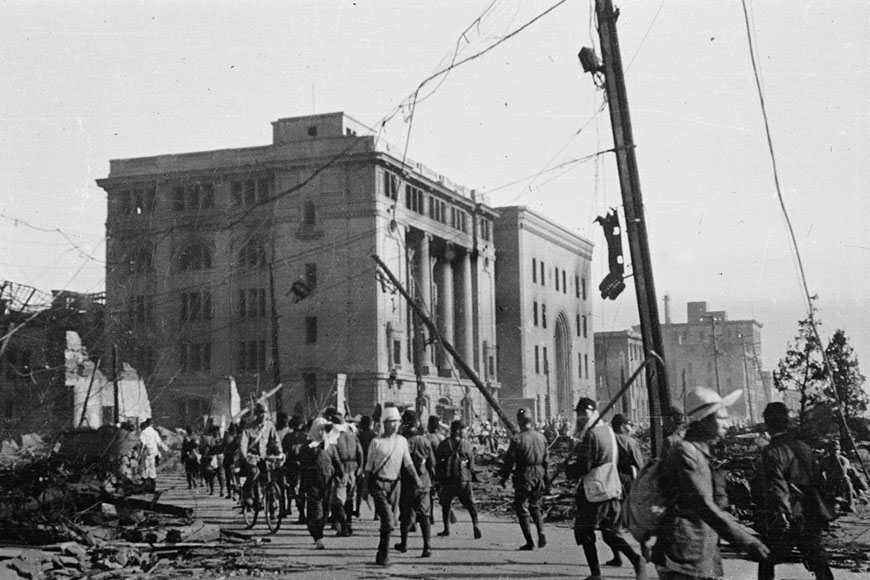
Multiple residents came to restore the city. August 1945
In the years that followed, the people of Japan died more and more often from cancer. Two to three years after the atomic bombing, the incidence of leukemia began to rise. Many children exposed to radiation in utero were born with abnormally small heads or microcephalism, which is accompanied by severe mental disabilities.
In 2015 the International Committee of the Red Cross published a report titled as “Long-term consequences of the use of nuclear weapons for human health.” It provides information on the condition of survivors of the bombings of Hiroshima and Nagasaki.
According to the report, of those who died before March 2014 at the Hiroshima hospital caring for atomic bomb victims, nearly two-thirds (63%) had malignancies, primarily lung cancer (20%), stomach cancer (18%), liver cancer (14%), leukemia (8%), colon cancer (7%) and malignant lymphoma (6%) as the cause of death.
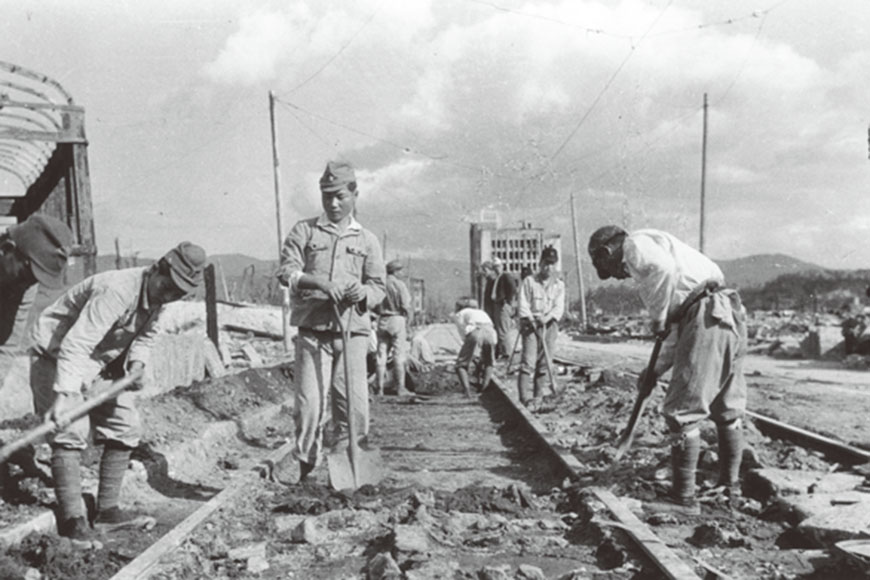
In a hospital located in Nagasaki, 56% of the deaths of patients affected by the atomic explosion were primarily caused by the following types of cancer: lung cancer (38%), liver cancer (12%), and stomach cancer (9%). Apart from that, malignancies such as colon, lymphatic, gallbladder, and pancreatic cancers together accounted for 24% of the cancer-caused deaths of the atomic blast patients.
Child survivors of the bombing often contracted multiple types of cancers, each of which developed independently. This is explained by the fact that their whole bodies were exposed to radiation, causing damage to stem cells in several organs, the Red Cross report noted.
The atomic bombs dropped on Japan killed people regardless of their nationality. There were thousands of Koreans, Chinese, Germans, Russians, and Japanese Americans living in Hiroshima at the time. There were also American prisoners of war in the city.
After they barely survived the nuclear disaster, people faced a variety of hardships. They had to continue their lives despite illness, physical traumas, and deep grief from the loss of loved ones.
After the atomic bombing of Japan, another term emerged in medicine — the Eatherly Complex. U.S. Air Force Colonel Claude Eatherly, who had given the order “Bomb the first target!” from the escort plane went insane later from what he had done and spent the rest of his life in a mental hospital. His illness is called the Eatherly Complex, a condition that affects people who have used weapons of mass destruction.
Buddha in Hell. What do hibakushas tell us about?
Survivors of nuclear explosions in Japan are called hibakushas. Talking about what happened, these people paint apocalyptic pictures, often comparing what happened to man-made hell on Earth.
Akihiro Takahashi was 14 years old at the time of the bombing. He remembers terrible noise and a shock wave that threw him back by about 10 meters. “I felt the city of Hiroshima suddenly disappear. I looked at myself and found that my clothes had turned to rags. The back of my head, my back, both arms and both legs were burned. I automatically walked westward, toward the house. I saw a lot of victims along the way. I saw a man, the upper half of whose body was completely skinned, and a woman whose eyeballs had fallen out. Her child was bleeding,” Akihiro described what he saw.
In all this chaos, he had the good fortune to meet his relatives. “It was a coincidence. We have a proverb about meeting Buddha in hell. My meeting with my relatives at that time was just that. They seemed like Buddha wandering in hell,” Akihiro said.
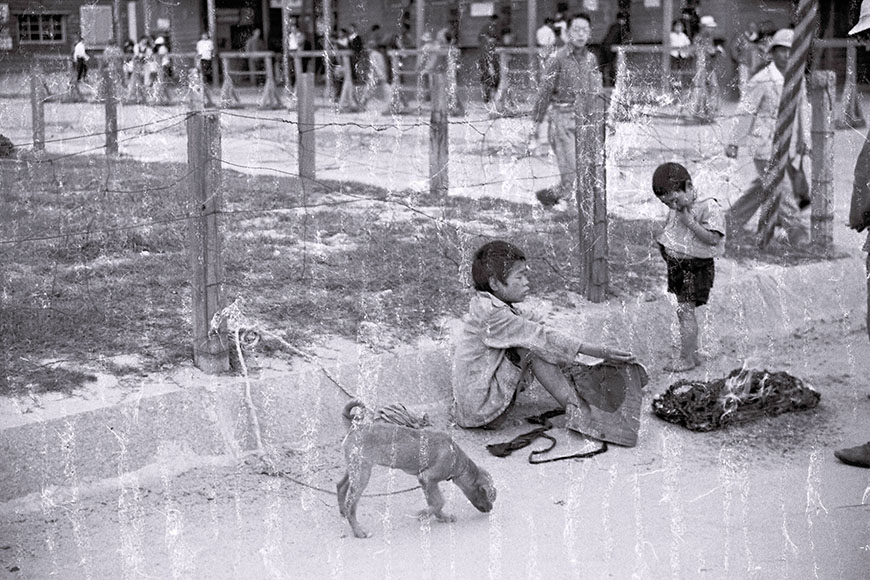
Orphans in Hiroshima. October 1947
Another story is told by Akira Onogi, who was 16 years old at the time of the nuclear strike. “What really impressed me was a five- or six-year-old boy with cuts on his right leg to the hip. He was jumping on his left leg to cross a bridge over a river. This river was filled with dead people who had died in the explosion and survivors who had come here in search of water. Many of the wounded were looking at us and crying out for help.”
And these are recollections of Akiko Takakura, who was 20 years old when the bomb fell on Hiroshima: “Hiroshima was completely engulfed in flames. We were hot and there was nothing to breathe at all. After a while, a whirlwind of fire approached us from the south. It was like a big tornado of fire… The fire and smoke made us thirsty, but there was no water. When it started raining, people put their faces under the rain, trying to catch the drops with their mouths. That rain was black.”
The Hiroshima and Nagasaki tragedies left thousands of children orphaned. Hiroko Fukada lost her mother, father and sister in the explosion. “I was only 18 years old at the time, and I suddenly lost my parents. I didn’t know what to do. But I had two younger brothers that I had to take care of and support. So I couldn’t afford wallowing in grief,” Hiroko says.
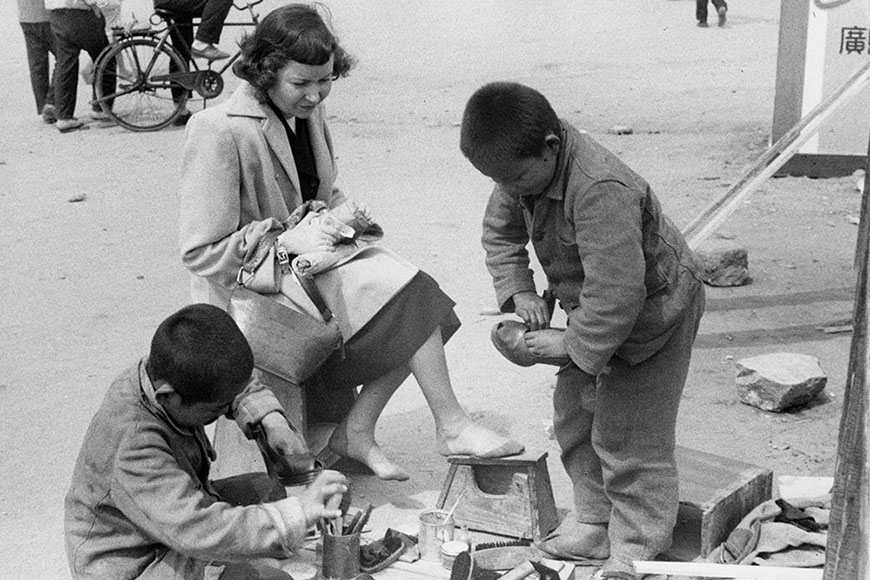
Orphans, whose parents died in the catastrophe. 1948
The army doctor Hiroshi Sawachika was 28 years old when the bomb was dropped. Since he was quite far away from the epicenter of the explosion, he was not seriously injured. Together with other medics he later fought for the lives of survivors.
“They were like ghosts,” Hiroshi describes the victims. “I felt someone touch my leg, it was a pregnant woman. She said to me, ‘I know I’m going to die. But I can feel my baby moving inside. It wants to get out. I don’t mind if I die, but my child doesn’t have to die with me. Please help my baby survive.’ I still remember this case because I could not fulfill this dying young woman’s last wish,” Hiroshi said.
He believes that seeing the suffering of the people that day made him realize a lot. “I learned that nuclear weapons, which strike people’s minds and bodies, must never be used. Even the slightest idea of using nuclear weapons must be completely eradicated,” Hiroshi is convinced.
The grave of a thousand cranes. How do they honor the dead in Japan?
Within a month after the bombings, people erected simple tombstones in Hiroshima and Nagasaki to honor those, who had died in the bombings. Memorial services were held everywhere.
Mourning events have been held in Japan every year since then. In addition, 6 August is International Day for the Total Elimination of Nuclear Weapons around the world. It is also called Hiroshima Day.
Ten years after the atomic bombing, on 6 August 1955, the first international conference for the prohibition of atomic and hydrogen weapons was held in Hiroshima.
In 1954, a peace park was opened in the center of Hiroshima with a monument to the victims of the bombing. It is a concrete tent, as if sheltering the dead. The crypt of the memorial keeps a list of all the people who died from the atomic explosion. Near the monument is the Peace Memorial Museum, which has a visual exhibition with photographs, wax sculptures, demonstrating the horrors of the bombing, the helplessness of ordinary citizens, and their agony from the wounds and burns.
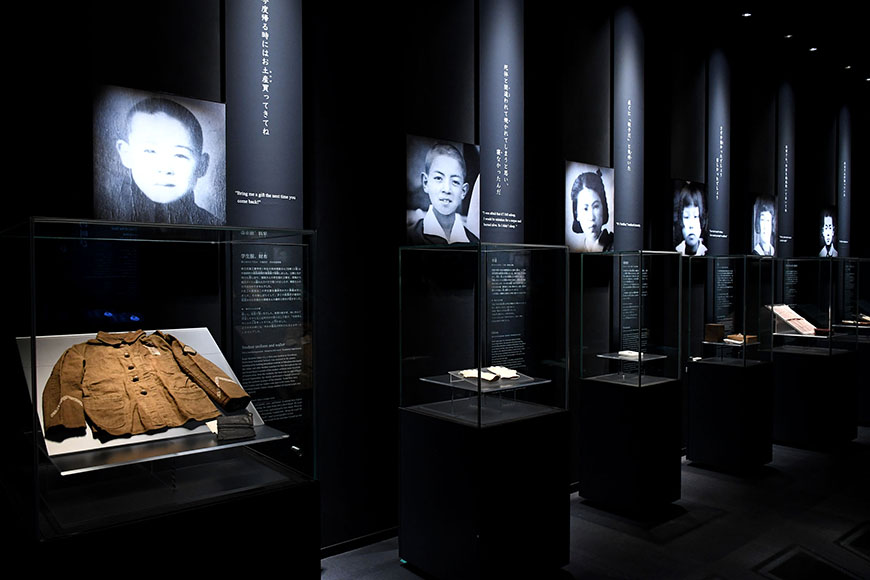
There is also the Children’s Peace Monument, also called the Tomb of a Thousand Cranes or Sadako Monument. At this monument you can often see schoolchildren who came to Hiroshima for a field trip with garlands of paper cranes. Sasaki Sadako, a two-year-old survivor of the bombing, was diagnosed with leukemia in 1955. The girl fought the disease for eight months, but died in the end. Sadako believed that if she folded a thousand paper cranes, she could recover, and made more than 1,300 cranes from medicine wrappers and other scraps of paper. Classmates, who took Sadako’s death hard, wanted to create a memorial to all the children who died because of the atomic bombing, and began fundraising at many schools. The monument was unveiled on 5 May 1958. Its opening was timed to Children’s Day.
The Peace Park in Hiroshima also has a memorial bell, the striking of which calls on the whole world to remember those who died and to do everything to prevent a repeat of the catastrophe.
There is also a peace memorial park in Nagasaki. The park is home to a 10-meter monument, the Statue of Peace. The statue was created by the sculptor Seibo Kitamura. Each of its parts has a symbolic meaning. The right arm raised to the sky is a reminder of the threat of nuclear weapons, and the left arm extended parallel to the ground symbolizes eternal peace. The face of the statue also represents peace, and the closed eyes denote a prayer for peace for the souls of the dead. The right leg of the statue is tucked in as if to meditate, while the left leg rests firmly on the ground, urging one to stand up and protect peace.
Humane execution. Why didn’t the USA apologize to the Japanese people?
78 years after the atomic bombing of Hiroshima and Nagasaki, U.S. authorities have still not offered an official apology to the Japanese people. A G20 summit took place in Hiroshima this year. U.S. President Joe Biden took part in it. The U.S. president visited the Hiroshima Peace Memorial Museum and even left a note in the visitors’ book. However, he did not condescend to apologize to residents of the destroyed city.
Biden’s predecessor Donald Trump once claimed that the Manhattan Project had ushered in an “unprecedented era of global stability” in the world.
The United States of America cannot admit that it had acted in error, says Peter Kuznick, director of the Nuclear Studies Institute at American University in Washington.
“According to the official version, the USA bombed Hiroshima and Nagasaki because the Japanese were fanatics and would not capitulate, and atomic bombing was the only way to end the war without American ground troops getting involved. The alternative was an American invasion. President Truman wrote in his memoirs that it would have cost half a million American lives, and then he pointed out that it would also have cost the lives of millions of Japanese. So, according to the official explanation, the bombing was not only justified, it was actually humane because it saved so many lives,” Peter Kuznick told Euronews.
In reality, however, the situation looked different. The United States of America had two alternative options for ending the war, the historian believes. First, it was possible to tell the Japanese that they could keep their emperor. The demand for unconditional surrender was the main obstacle to Japan’s official recognition of the country’s defeat: then the emperor could be tried and executed as a war criminal. The second alternative was to wait for the Soviet Union’s help. Truman himself recalled how he was trying to get the Russians to agree to go to war against Japan. According to him, he received all assurances of USSR assistance from Joseph Stalin. The next day Truman wrote home to his wife: “The Russians are entering the war and will end it soon. Imagine how many children will not be killed!”
Thus it was possible to make the Japanese surrender without using the atomic bomb. However, the USA changed its mind. “It was an inhumane warning to the Soviet Union, in case they got in the way of American postwar plans in Europe or in the Pacific, which they would have to deal with,” Kuznick believes.
In his words, the lie about the role of the atomic bombing in ending World War Two is designed to protect the reputation of the United States, to pretend that it was a necessary and even humane act.
Of the eight top generals in the United States in 1945, seven said that the atomic bombing made no military sense. They also pointed out that such a move deserved condemnation from the point of view of ethics. Admiral William Leahy, chairman of the Joint Chiefs of Staff under Truman, wrote: “The Japanese were already defeated and ready to surrender. It is my opinion that the use of the barbarous weapon at Hiroshima and Nagasaki was of no material assistance in our war against Japan. In being the first to use it, we had adopted an ethical standard common to the barbarians of the Dark Ages.”
“It didn’t make any sense to do that, but we can’t admit it. Because it would undermine the very essence of the idea that America is the world’s moral leader, the notion of American exceptionalism, the concept of humanism of our leaders, which says that we sometimes make mistakes, but our goals are good. But our intentions were not good. Our actions were not good. And the consequences were terrible. In the new reality with which we have been living since the day of the bombing, the life expectancy of humanity as a species has been greatly reduced. The hands of the Doomsday Clock are closer to midnight now than at any time since this project began in 1947. We are going through a real crisis, an existential threat,” noted Peter Kuznick.
The bombing of Hiroshima and Nagasaki had long-term consequences for world politics and international relations. An arms race began across the globe.
“There was an opportunity to keep this nuclear genie in a bottle in 1945. But as soon as the USA used these weapons, and then began stockpiling warheads, targeting them at the Soviet Union and then China, the arms race that scientists had warned Truman about began. The world is living on a powder keg,” Peter Kuznick stated.
Barack Obama became the first U.S. president to visit Hiroshima in 2016. He shook hands with Japanese survivors of the bombings, but never apologized. U.S. officials can’t admit that the USA had done the wrong thing. “Look at what Obama started his Hiroshima speech with. He said: ‘Death fell from the sky on Hiroshima and Nagasaki.’ Death did not fall from the sky. It was the USA that had dropped the two nuclear bombs. We are dealing with a fundamental lie,” the American historian concluded.
However, Americans are not the only ones trying to justify the USA’s nuclear attack on Hiroshima and Nagasaki. In 2007 Japanese Defense Minister Fumio Kyuma said that he did not hold a grudge against the United States because, in his opinion, the bombing was inevitable and helped prevent the Soviet occupation of Hokkaido. These words caused a storm of indignation across the country, primarily among the victims of the atomic bombings. As a result, Kyuma was forced to resign.
The tragedies of Hiroshima and Nagasaki cannot be forgotten. It has significance not only for the Japanese people, but also for the entire world. We must remember that wars take lives of thousands of innocent people. But a nuclear war can take lives of all mankind. We wish above all that those who once overstepped the bounds of reason by using the deadliest weapon on the planet against human beings would remember this.



